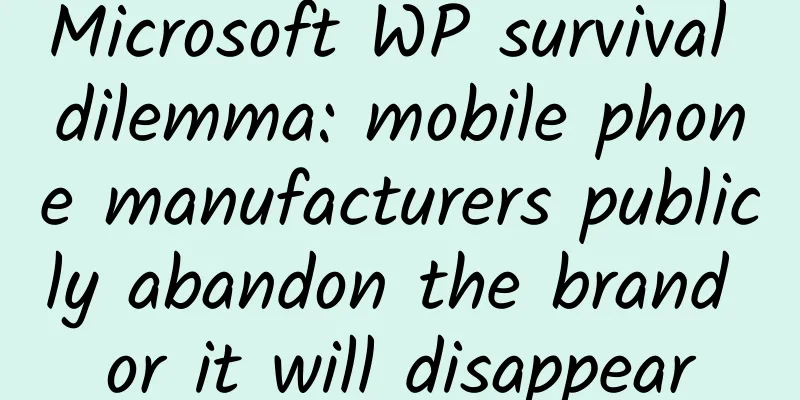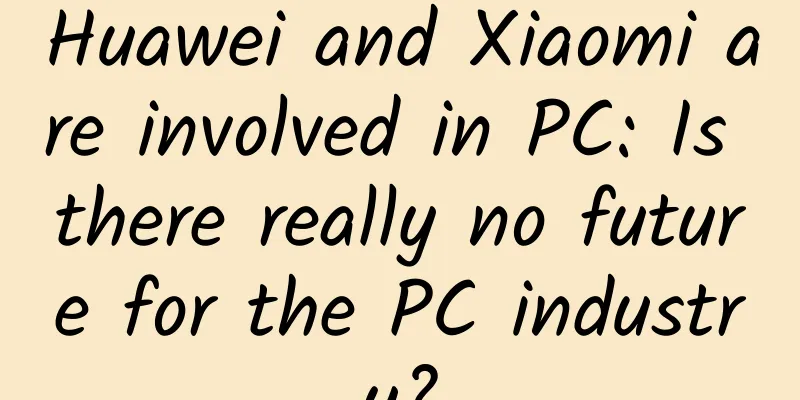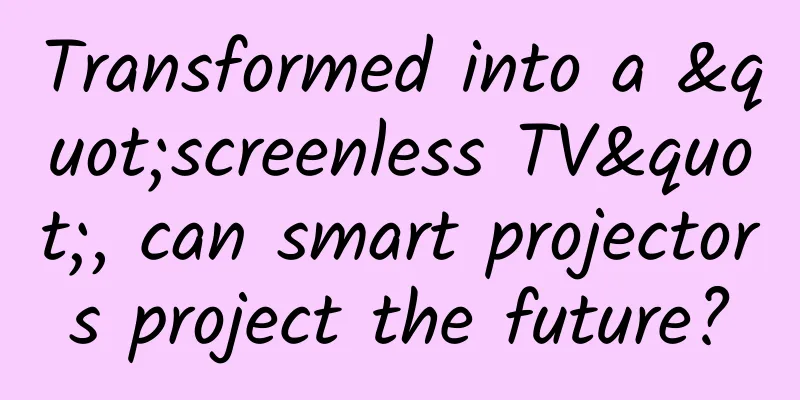Microsoft WP survival dilemma: mobile phone manufacturers publicly abandon the brand or it will disappear

|
The gap between WP and Android and iOS market share is widening Windows Phone (WP for short), the mobile device operating system that Microsoft has devoted its efforts to developing, is in an awkward situation, especially in China, the world's largest smartphone market. WP's market share has dropped to less than 1% this year. Statistics from Kantar's mobile market share show that from September 2013 to September 2014, an important period of mobile phone market sales, Microsoft WP's market share in China dropped from 2.8% to 0.4%. In the past year, with the exception of Nokia , which was acquired by Microsoft , more than 95% of mobile phone manufacturers have not launched any products based on WP, and have not mentioned it in their product plans for next year. Regarding Microsoft WP, the attitude of mobile phone manufacturers has gradually changed from waiting and watching to publicly announcing their abandonment. WP becomes an isolated market: mobile phone manufacturers gradually give up It has been more than three years since the release of Microsoft WP 8. Although it is known as one of the world's three major mobile operating systems along with Android and iOS, the gap in market share between WP and Android and iOS is further widening. The latest report from market research firm IDC predicts that global smartphone shipments will reach 1.3 billion units in 2014, a year-on-year increase of 26.3%. Among them, Android smartphone shipments will reach 1.06 billion units, accounting for 82.3%, while WP-based smartphone shipments will reach 35 million units, accounting for 2.3%, only a fraction of the former. In order to increase its market share, Microsoft has also made many efforts, such as actively introducing OEM manufacturers. Previously, Microsoft has introduced 14 OEM manufacturers, including Nokia and HTC, and has released more than 22 WP devices. However, only Nokia has really taken action, followed by Samsung and HTC. This year, most mobile phone manufacturers have not launched products based on WP, and Huawei, one of the first to support it, has also expressed its attitude of giving up. In August this year, Huawei Consumer Business CEO Richard Yu said in an exclusive interview with Tencent Technology, "Huawei has suffered losses in its WP mobile phone business for two years. It is difficult to convince consumers to buy this model, and now the release of this model has been shelved." The reason is that high licensing fees were the biggest obstacle to the initial promotion of WP in the domestic market. Huawei's product manager in charge of WP at the time told Tencent Technology, "Huawei is a veteran domestic brand in the WP camp, and has launched two WP products, Ascend W1 and Ascend W2. However, in the later promotion, Microsoft's support and cooperation were far inferior to Huawei, and the licensing fees did not decrease. It lacked the awareness and consciousness to build an industrial chain." Shao Yang, chief marketing officer of Huawei's consumer business, once told the media that high licensing fees have caused the price of WP phones to increase by 10%, which has undoubtedly caused considerable cost pressure on terminal manufacturers in the highly competitive domestic market. It was not until this year's Build 2014 conference that Microsoft announced that it would waive licensing fees for devices with pre-installed Windows and WP operating systems below 9 inches. However, mobile phone manufacturers in the domestic 4G boom have fully invested in the market competition around Android and have no intention of paying attention to WP. In this regard, the relevant person in charge of ZTE, which released a WP 7.5-based mobile phone two years ago, told Tencent Technology, "We are now fully committed to Android. It is not to say that we have completely given up on WP, but at least there will be no plans to launch related products in the next few years." And at the beginning of this year, Microsoft announced that ZTE, Gionee, Lenovo and others would become its OEM partners. It can be seen that Microsoft still lacks initiative in the subsequent promotion. Slightly different from other mobile phone manufacturers, Hisense just joined the WP camp in the middle of this year and subsequently released its first mobile phone based on WP 8.1, code-named "NANA". However, given the limited influence of the Hisense mobile phone brand, it did not attract much attention in the domestic market after its release. In addition to the mobile phone manufacturers mentioned above, Coolpad, Lenovo, Samsung, HTC, TCL and others have all expressed to Tencent Technology that they have almost given up on WP. "HTC has not launched any new WP-based products in the past year or so. There will be plans for next year, but they will not be targeted at the Chinese market," said a relevant HTC official. According to the latest statistics from Sino, by the end of October this year, the sales volume of WP-based smartphones in China was about 160,000 units, accounting for less than 1% of the market share. More than 80% of the sales volume came from Nokia, followed by HTC with 9% and Hisense with 7%. The market leaders Samsung and "China Cool Alliance" both had a market share of less than 1%. The aforementioned statistics agency Kantar determined that almost no one in China is using smartphones equipped with WP. Having missed out on China, the world's largest smartphone market, WP's share can only hover at a low level. Microsoft previously spent $7.2 billion to acquire Nokia's mobile phone manufacturing business. Analysts believe that Microsoft WP lacks new forces to join, and after Microsoft completed the acquisition of Nokia's device department, other manufacturers have become more determined to wait and see. "The merger of Microsoft and Nokia may lead to unfair market competition. For example, API and customization cannot be fair to everyone. Initially, mobile phone manufacturers started using WP, but only Nokia had exclusive access to some APIs. The problem still exists now," an executive of a mobile phone manufacturer told Tencent Technology. Microsoft's ambition to unify the world: WP brand may be abandoned Facing the survival pressure in the Chinese market, Microsoft officials responded to Tencent Technology and said that Microsoft will continue to invest in the Lumia product line, and WP 8.1 devices from third-party partners have also begun to be launched globally. More than 20 devices have been launched by partners including Allview, France's Archos, BLU, Philippines' Cherry Mobile, Hisense, HTC, Italy's NGM, Kazam, India's Micromax, Prestigio, Vietnam's Q-Mobile, UCall, Xolo and Yezz. It is not difficult to see that although the partners are spread all over the world, the big players like "China Cool Alliance" that occupy the global smartphone market share are not on the list, and even Samsung, which initially supported it, is not on the list. The person in charge of Samsung mobile phones did not respond to Tencent Technology's inquiry about whether it will launch related WP products next year. It is understood that it has been more than a year since the last WP product launched by Samsung in the Chinese market. However, Microsoft also has its own ideas. "At present, our platform has been expanded to support new hardware, new networks, better display screens, more languages, and more devices." A Microsoft official told Tencent Technology. In response to the increasing abandonment of most mobile phone manufacturers, Microsoft hopes to make up for the shortcomings of terminals through seamless connection of the platform. In October this year, Microsoft showed the next-generation operating system Windows 10 technical preview, which Microsoft called "the most complex platform in history." Because Windows 10 will cover all hardware devices and provide an integrated experience. Developers can develop applications on this platform that are compatible with all platforms, including PCs, tablets, mobile phones, and Xbox One. The industry believes that this move means Microsoft will unify the entire Windows platform. The purpose is naturally to use Windows' advantages in PC to drive the declining WP, and the WP brand itself will naturally face the fate of being integrated. Since the second half of last year, Microsoft has released a signal of Windows unification. Microsoft has set up a unified operating system team and appointed Microsoft Executive Vice President and Operating System Division Director Terry Myerson to be in charge. The team is responsible for all development work including WP, embedded Windows system, Windows system for PC and tablet computers, and Xbox One operating system. Microsoft CEO Satya Nadella once said that he would streamline the next generation of Windows system, integrate the current major operating systems into a unified operating system platform, and at the same time unify the Windows app store, business model and developer platform. A person who has studied Microsoft for many years told Tencent Technology that "Microsoft's current integration is to connect the operating systems of mobile phones, tablets, computers, and servers. Windows 8 unified the kernel, development tools, and application stores. Windows 10 will probably be more seamless." It is still too early to verify whether Microsoft's idea of seamless unification is feasible, but the current survival crisis in the App Store needs to be resolved as soon as possible. According to a report from BI, the number of apps on the WP store seems to have increased significantly, but most of them are fake or shoddy. For example, some well-known apps such as Google Mail and Google Maps have been counterfeited and are just listed on the WP platform. Some popular apps have been online on Android and iOS platforms for more than half a year but have not been promoted to the WP platform, and have not even been updated. Actively supporting small and medium-sized developers, increasing investment in technology and funds, and allowing developers to survive well in the ecosystem are Microsoft's top priorities for resolving WP's survival crisis. Compared with the steady pace of the PC era, the smartphone market is developing at a rapid pace. Microsoft needs to keep up with the changes in wireless communications as soon as possible in terms of the speed of unifying Windows and building an ecological chain. As a winner of Toutiao's Qingyun Plan and Baijiahao's Bai+ Plan, the 2019 Baidu Digital Author of the Year, the Baijiahao's Most Popular Author in the Technology Field, the 2019 Sogou Technology and Culture Author, and the 2021 Baijiahao Quarterly Influential Creator, he has won many awards, including the 2013 Sohu Best Industry Media Person, the 2015 China New Media Entrepreneurship Competition Beijing Third Place, the 2015 Guangmang Experience Award, the 2015 China New Media Entrepreneurship Competition Finals Third Place, and the 2018 Baidu Dynamic Annual Powerful Celebrity. |
<<: Copying 100 companies? What are Xiaomi's limitations?
>>: OLED is on the way out, and the quantum dot era is opening up in the global color TV industry
Recommend
Taobao SEO: Comprehensive search keyword optimization skills
1. Normal word search In general, many of our way...
Do these 5 things well and the click-through rate of information flow advertising materials will increase by 90%
What does craftsmanship require? Humility, persev...
Four channels for APP to recall users: EDM, Push, SMS, and public account
The author of this article will share with you ho...
3 things you didn't know about the MacBook Air's demise
Back in 2010, Apple launched a new version of the...
Archaeologists have discovered wine that is more than 2,700 years old. Is this true?
Archaeologists have discovered wine that is more ...
Petrochemicals, plastics and fossil fuels: Do you know how these industries are connected?
Did you know? More than 99% of plastics are made ...
"Yangkang" passengers return home
Source: Xinhua News Agency Client Producer: Sun Z...
2022 Chengdu Tea Tasting Private WeChat Tea Tasting Best
Private WeChat appointment arrangements for Cheng...
Do you rely on "shivering" to keep warm in winter? 5 heater reviews to keep you warm in winter~
Winter in the north: witnessing the first snow vs...
Apple should buy Netflix
While the focus of Apple's event last Thursda...
WOT2015 pre-interview series——Qu Yi, technical director of Lefeng.com
51CTO WOT 2015 Mobile Internet Developer Conferen...
iOS 15 now available with improved device intelligence and social features
Many of the features Apple announced during its W...
More than half of the residents in my country have "unsatisfactory" breakfast! Learn how to eat breakfast correctly in one article
On winter mornings, many people would rather give...
Rocket launches fail for different reasons
In 2022, there were 186 orbital launches worldwid...
Confirmed! Apple will completely ban 32-bit applications, 200,000 apps will be removed from the shelves
With the release of iOS 11 this year, Apple has d...









